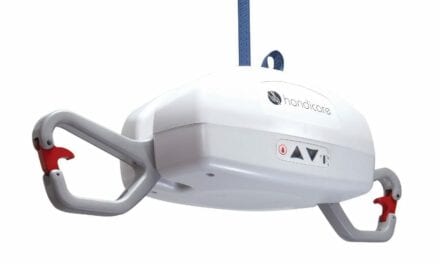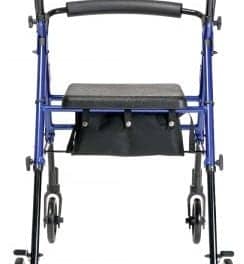The Ohio State University Wexner Medical Center (OSUWMC) has launched an Institutional Review Board-approved evaluation of the PUP (Patient is UP) “smart” socks designed by Lebanon, Ohio-based Palarum for patients at risk of falls.
The study will be conducted with “high fall-risk” in-patients on three floors of the Ohio State University Wexner Center Brain and Spine Hospital, according to the company.
“Falls can have widespread and significant impact on health; they can be serious and often result in high costs and additional days in the hospital,” says Tammy Moore, nursing administrator and principal investigator of this study at Ohio State’s Neurological Institute. “The best way to reduce falls is to prevent them.”
The Palarum PUP (Patient is UP) smart socks are designed with patented wearable technology to help prevent patient falls and enhance rehabilitation therapy. Using eTextile and IoT technologies, PUP socks issue real-time alarms to immediately notify nearby nurses that a fall-risk patient is out of bed, standing, and/or attempting to walk unassisted.
The Palarum PUP study will enroll 2,500 inpatients over a 9-month period. The results will be compared to benchmark data for each of the three patient floors to determine the overall value of the sock in patient care. Nurses will be educated on enrolling patients who meet high-fall risk criteria.
Once enrolled, the patient will be fitted with a pair of PUP socks and will be continually monitored for possible movement out of bed during his or her hospitalization. If the PUP sock detects a patient attempting to get out of bed, an alert will be sent to the three closest nurses wearing a specially designed PUP smart badge. An alert will also be sent to the nurses’ station and to a PUP smart tablet in the patient’s room, a media release from Palarum explains.
“We hope to demonstrate that the fall rate among this patient population will decrease with the use of Palarum’s PUP sock,” states Patrick Baker, president and CEO of Palarum, in the release.
“We expect the results of this study to mirror those of previous studies conducted that showed a significant reduction in patient falls when the PUP sock is used. We are also actively engaged with healthcare organizations around the country to evaluate the PUP system with their patients,” he adds.
In addition to reducing patient falls, the study has three secondary objectives:
- Reduce the incidence of false alerts to less than five percent
- Provide positive alert reliability of 95%, reducing alarm fatigue among nurses
- Gather compliance data and response times from alert to caregiver response
[Source(s): Palarum, PR Newswire]





